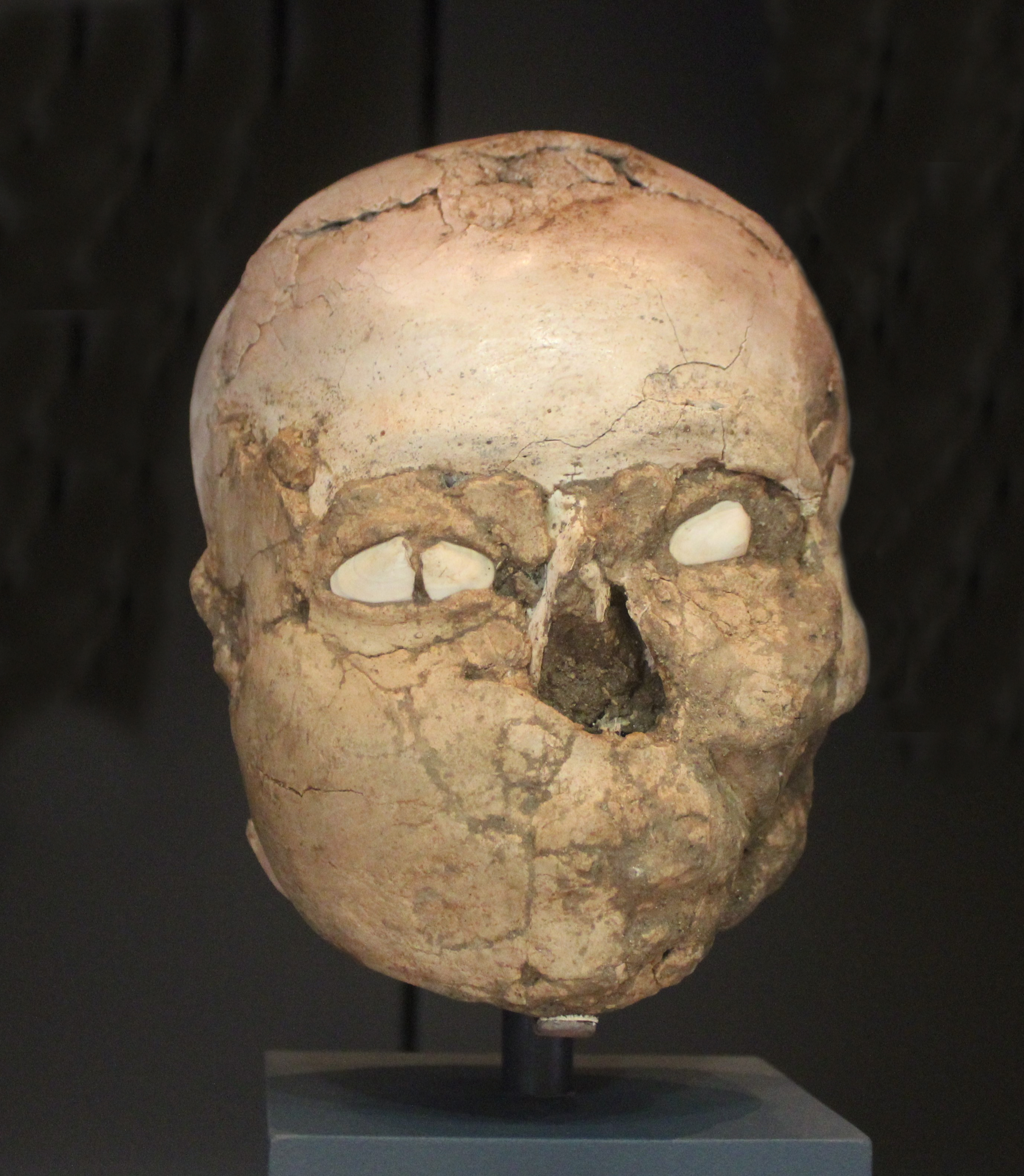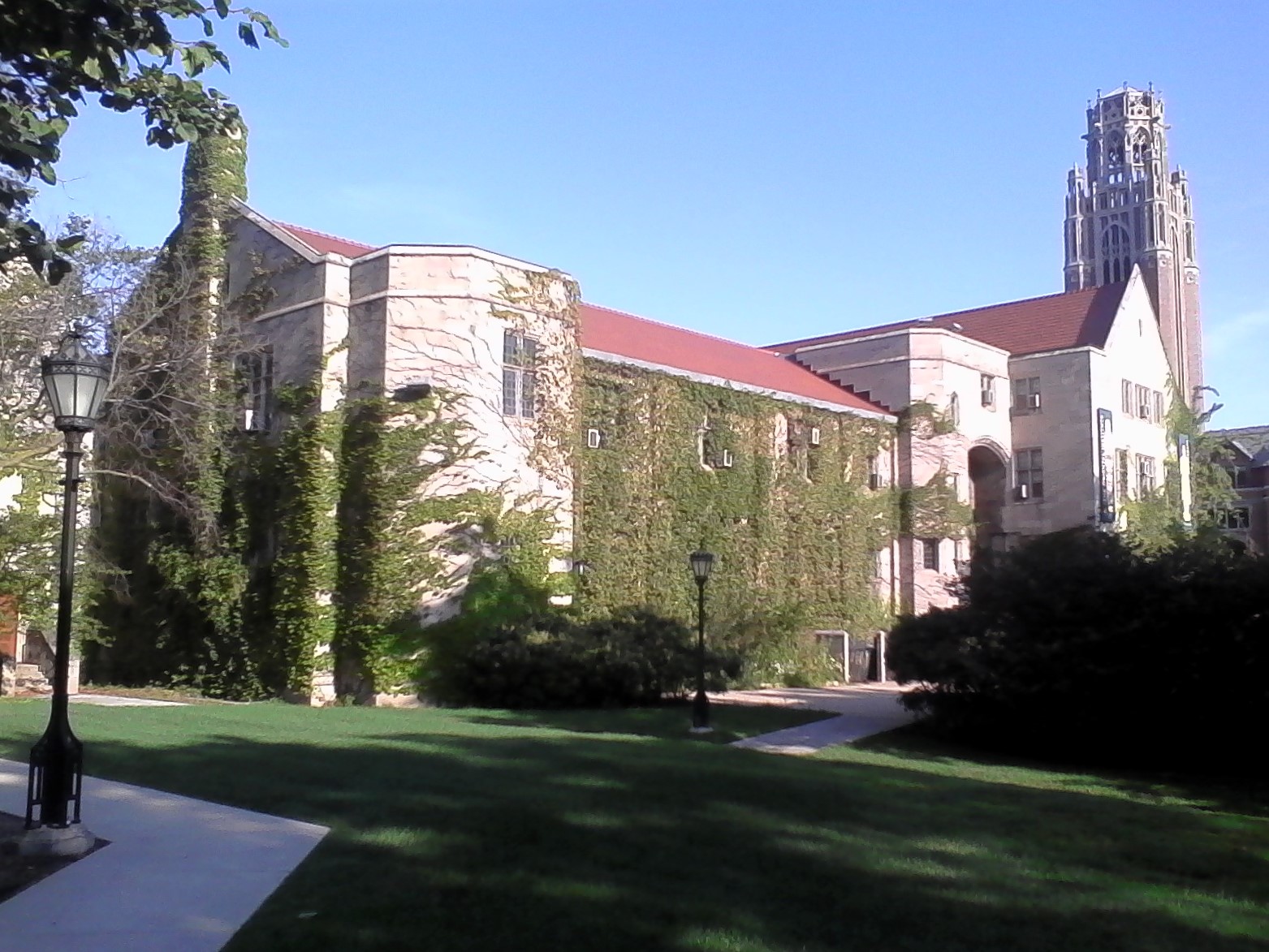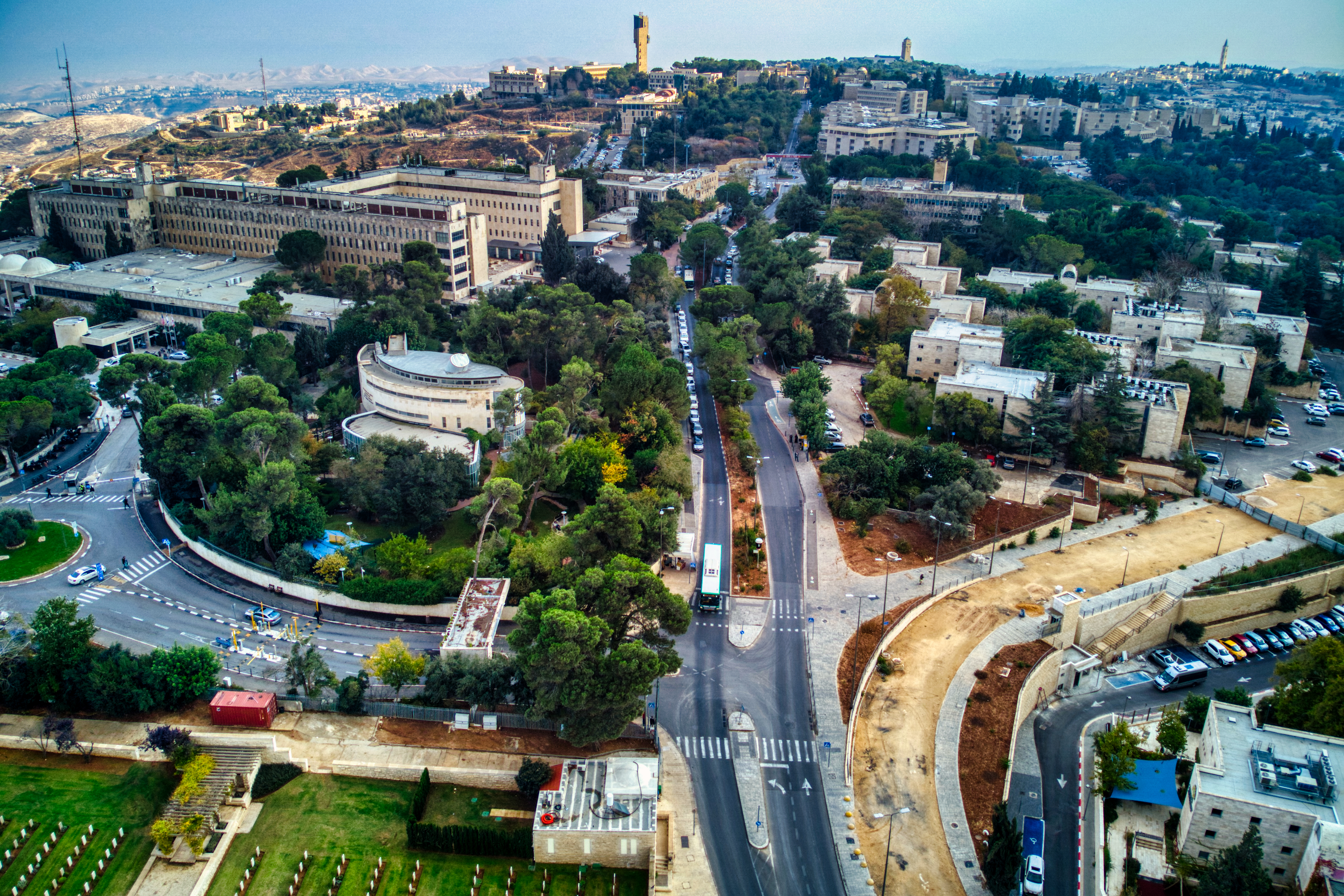|
Trude Dothan
Trude Dothan (; 12 October 1922 – 28 January 2016) was a professor of archaeology at the Hebrew University, who focused on the Late Bronze and Iron Ages in the region, in particular in Philistine culture. Winner of the Israel Prize in Archaeology Research for the year 1998. Biography Trude Krakauer (later Dothan), was born in Vienna, the daughter of Grete Wolf Krakauer (née Wolf, 1890–1970), a painter, and Leopold Krakuer, an architect and artist who designed several Bauhaus-style buildings for Jerusalem's " garden city" of Rehavia. In 1924 she immigrated with her parents to Israel, at the time Mandatory Palestine, and settled in Jerusalem, where they joined the local community of intellectuals and artists, many of them German speakers. She attended the Rehavia Gymnasium for her high school education, and then studied archeology at the Hebrew University at Mount Scopus. Her first excavation was at Tel Beit Yarah ( Khirbet Karak). After serving in the IDF durin ... [...More Info...] [...Related Items...] OR: [Wikipedia] [Google] [Baidu] |
Vienna
Vienna ( ; ; ) is the capital city, capital, List of largest cities in Austria, most populous city, and one of Federal states of Austria, nine federal states of Austria. It is Austria's primate city, with just over two million inhabitants. Its larger metropolitan area has a population of nearly 2.9 million, representing nearly one-third of the country's population. Vienna is the Culture of Austria, cultural, Economy of Austria, economic, and Politics of Austria, political center of the country, the List of cities in the European Union by population within city limits, fifth-largest city by population in the European Union, and the most-populous of the List of cities and towns on the river Danube, cities on the river Danube. The city lies on the eastern edge of the Vienna Woods (''Wienerwald''), the northeasternmost foothills of the Alps, that separate Vienna from the more western parts of Austria, at the transition to the Pannonian Basin. It sits on the Danube, and is ... [...More Info...] [...Related Items...] OR: [Wikipedia] [Google] [Baidu] |
Rehavia
Rehavia or Rechavia (, ) is an upscale neighbourhood in Jerusalem. It is bordered by Nachlaot and Sha'arei Hesed to the north, Talbiya and Kiryat Shmuel, Jerusalem, Kiryat Shmuel to the south, and the Valley of the Cross to the west. Rehavia was established in the early 1920s on lands leased from the Greek Orthodox Patriarchate of Jerusalem, Greek Orthodox Church. It was designed by the German-born Jewish architect Richard Kauffmann, who envisioned it as a garden suburb inspired by Garden city movement, garden city principles and the International Style. The neighbourhood is marked by its tranquil character, achieved through narrow, curved streets intended to minimise traffic and commercial activity, which was limited to main streets. Early on, it attracted History of the Jews in Germany, German-Jewish immigrants,Horstmann, F., "Minimalism and After Political, Poetic and Personal Revisions". ''31: Women:'' ''Exhibition Concept after Marcel Duchamp, 1943'', p. 19. affluent Sephardi ... [...More Info...] [...Related Items...] OR: [Wikipedia] [Google] [Baidu] |
Kathleen Kenyon
Dame Kathleen Mary Kenyon, (5 January 1906 – 24 August 1978) was a British archaeologist of Neolithic culture in the Fertile Crescent. She led excavations of Tell es-Sultan, the site of ancient Jericho, from 1952 to 1958, and has been called one of the most influential archaeologists of the 20th century. She was Principal of St Hugh's College, Oxford, from 1962 to 1973, having undertaken her own studies at Somerville College, Oxford. Biography Kathleen Kenyon was born in London, England, in 1906. She was the eldest daughter of Sir Frederic Kenyon, biblical scholar and later director of the British Museum. Her grandfather was lawyer and Fellow of All Souls College, John Robert Kenyon, and her great-great-grandfather was the politician and lawyer Lloyd Kenyon, 1st Baron Kenyon. She grew up in Bloomsbury, in a house attached to the British Museum, with her mother, Amy Kenyon, and sister Nora Kenyon. Known for being hard-headed and stubborn, Kathleen grew up as a tomboy, fishi ... [...More Info...] [...Related Items...] OR: [Wikipedia] [Google] [Baidu] |
University Of London
The University of London (UoL; abbreviated as Lond or more rarely Londin in Post-nominal letters, post-nominals) is a collegiate university, federal Public university, public research university located in London, England, United Kingdom. The university was established by royal charter in 1836 as a degree-awarding examination board for students holding certificates from University College London, King's College London and "other such institutions, corporate or unincorporated, as shall be established for the purpose of Education, whether within the Metropolis or elsewhere within our United Kingdom". It is one of three institutions to have claimed the title of the Third-oldest university in England debate, third-oldest university in England. It moved to a federal structure with constituent colleges in 1900. It is now incorporated by its fourth (1863) royal charter and governed by the University of London Act 2018 (c. iii). The university consists of Member institutions of the Un ... [...More Info...] [...Related Items...] OR: [Wikipedia] [Google] [Baidu] |
Oriental Institute Of The University Of Chicago
The Institute for the Study of Ancient Cultures, West Asia & North Africa (ISAC), formerly known as the Oriental Institute, is the University of Chicago's interdisciplinary research center for ancient Near Eastern studies and archaeology museum. Established in 1919, it was founded for the university by Egyptology and ancient history professor James Henry Breasted with funds donated by John D. Rockefeller Jr. It conducts research on ancient civilizations throughout the Near East, including at its facility, Chicago House, in Luxor, Egypt. The institute also publicly exhibits an extensive collection of artifacts related to ancient civilizations and archaeological discoveries at its on-campus building in Hyde Park, Chicago. According to anthropologist William Parkinson of the Field Museum, the ISAC's highly focused "near Eastern, or southwest Asian and Egyptian" collection is one of the finest in the world. History In the early 20th century, James Henry Breasted built up the coll ... [...More Info...] [...Related Items...] OR: [Wikipedia] [Google] [Baidu] |
Tell Qasile
Tell Qasile is an archaeological site near the Yarkon River in Tel Aviv, Israel. Over 3,000 years old, the site contains the remains of a port city founded by the Philistines in the 12th century BC. Prior to 1948, it was on the village lands of Al-Shaykh Muwannis, which was depopulated in the 1948 war. While the war was still ongoing, in late 1948, the site was given the first archaeological permit by the newly declared of state of Israel. Today it is located on the grounds of the Eretz Israel Museum, which was built in 1953. Prior to these first excavations, two important ostraca were discovered at the site in 1945-96, by Jacob Kaplan and Robert Hoff. Identification suggestions At first it was suggested to identify Tell Qasila with "Glil Yam", a place mentioned on an inscription of Tiglath-Pileser III. A later suggestion was to identify it with the phrase from the Book of Joshua "Mi Yarkon", stating it is a city and not a stream. Archeologist Dr. Dror Ben-Yosef suggeste ... [...More Info...] [...Related Items...] OR: [Wikipedia] [Google] [Baidu] |
Eleazar Sukenik
Eleazar Lipa Sukenik (; 12 August 1889 – 28 February 1953) was an Israeli archaeologist and professor at the Hebrew University of Jerusalem. He is best known for helping establish the Department of Archaeology at the Hebrew University and being one of the first academics to recognise the age and importance of the Dead Sea Scrolls. He also oversaw the uncovering of the Third Wall of ancient Jerusalem. He also was the director of the Museum of Jewish Antiquities at the Hebrew University. Personal life Sukenik was born on August 12, 1889, in the town of Belostok, Grodno Governorate, Russian Empire (today Białystok in Poland). In 1912, he immigrated to Ottoman ruled Palestine where he worked as a school teacher and tour guide. He studied archaeology at the Hebrew Teachers Seminary in Jerusalem. He obtained a degree from the University of Berlin in 1923 and in 1926 his Doctorate from Dropsie College in Philadelphia, Pennsylvania. He served in the British army in World War I in th ... [...More Info...] [...Related Items...] OR: [Wikipedia] [Google] [Baidu] |
1948 Palestine War
The 1948 Palestine war was fought in the territory of what had been, at the start of the war, British-ruled Mandatory Palestine. During the war, the British withdrew from Palestine, Zionist forces conquered territory and established the State of Israel, and over 700,000 Palestinians fled or were expelled. By the end of the war, the State of Israel had captured about 78% of former territory of the mandate, the Kingdom of Jordan had captured and later annexed the area that became the West Bank, and Egypt had captured the Gaza Strip. The war formally ended with the 1949 Armistice Agreements, which established the Green Line demarcating these territories. It was the first war of the Israeli–Palestinian conflict and the broader Arab–Israeli conflict. The war had two main phases, the first being the 1947–1948 civil war, which began on 30 November 1947, a day after the United Nations voted to adopt the Partition Plan for Palestine, which planned for the division of the ... [...More Info...] [...Related Items...] OR: [Wikipedia] [Google] [Baidu] |
Israel Defense Forces
The Israel Defense Forces (IDF; , ), alternatively referred to by the Hebrew-language acronym (), is the national military of the State of Israel. It consists of three service branches: the Israeli Ground Forces, the Israeli Air Force, and the Israeli Navy. It is the sole military wing of the Israeli security forces, Israeli security apparatus. The IDF is headed by the Chief of the General Staff (Israel), chief of the general staff, who is subordinate to the Ministry of Defense (Israel), defense minister. On the orders of first prime minister David Ben-Gurion, the IDF was formed on 26 May 1948 and began to operate as a Conscription in Israel, conscript military, drawing its initial recruits from the already-existing paramilitaries of the Yishuv—namely Haganah, the Irgun, and Lehi (militant group), Lehi. It was formed shortly after the Israeli Declaration of Independence and has participated in List of wars involving Israel, every armed conflict involving Israel. In the wak ... [...More Info...] [...Related Items...] OR: [Wikipedia] [Google] [Baidu] |
Khirbet Kerak
Khirbet Kerak ( , "the ruin of the fortress") or Beth Yerah (, "House of the Moon (god)") (also Khirbat al-Karak) is a Tell (archaeology), tell (archaeological mound) located on the southern shore of the Sea of Galilee in modern-day Israel. The tell spans an area of over 50 acres—one of the largest in the Levant—and contains remains dating from the Early Bronze Age (c. 3000 BCE - 2000 BCE) and from the Achaemenid Empire, Persian period (c. 450 BCE) through to the Early Islamic period (c. 1000 CE).''The Holy Land: An Archaeological Guide from Earliest Times to 1700,'' Jerome Murphy O'Connor, Oxford University Press, 1980, p.159 Khirbet Kerak ware is a type of Early Bronze Age Syro-Palestinian archaeology#Ceramics analysis, Syro-Palestinian pottery first discovered at this site. It is also found in other parts of the Levant, including Jericho, Beth Shan, Tell Judeideh, and Ugarit. Khirbet Kerak culture appears to have been a Levantine version of the Kura–Araxes culture, Early T ... [...More Info...] [...Related Items...] OR: [Wikipedia] [Google] [Baidu] |
Mount Scopus
Mount Scopus ( ', "Mount of the Watchmen/ Sentinels"; ', lit. "Mount Lookout", or ' "Mount of the Scene/Burial Site", or "Mount Syenite") is a mountain (elevation: above sea level) in northeast Jerusalem. Between the 1948 Arab–Israeli War and the Six-Day War in 1967, the peak of Mount Scopus with the Hebrew University campus and Hadassah Hospital was a UN-protected exclave of Israel within Jordan. Today, Mount Scopus lies within the municipal boundaries of the city of Jerusalem. Name and identification The ridge of mountains east of ancient as well as modern Jerusalem offers the best views of the city, which it dominates. Since the main part of the ridge bears the name Mount of Olives, the name "lookout" was reserved for this peak to the northeast of the ancient city. Its name in many languages (Hebrew, Arabic, Greek and Latin) means "lookout." Scopus is a Latinisation of the Greek word for "watcher", ''skopos''. . Adding to the multi-layered meaning of the name, it is ... [...More Info...] [...Related Items...] OR: [Wikipedia] [Google] [Baidu] |
Rehavia Gymnasium
Rehavia Gymnasium or the Jerusalem Rehavia Gymnasium, by its Hebrew name Gymnasia Rehavia (), is a high school in the Rehavia neighborhood in West Jerusalem. History The high school's initial name was the Hebrew Gymnasium in Jerusalem. Gymnasia Rehavia was Jerusalem's first and the country’s second modern Jewish high school or Gymnasium (school), gymnasium, after the Herzliya Hebrew Gymnasium in Tel Aviv. The school was first established in Jerusalem's Bukharan Quarter in 1909, by members of the loosely organized group of artists who named themselves "The New Jerusalem", for lack of an appropriate school framework in Jerusalem for their children. The building on Keren Kayemet Street in the Rehavia neighborhood was built in 1928. Among the founders were Dr. Naftali and Hannah Weitz, Yehoshua Barzilay, Yitzhak Ben-Zvi, later the second president of Israel, his wife Rachel Yanait and the artist Ira Jan. The latter three were also among its first teachers. In July 2009, the high s ... [...More Info...] [...Related Items...] OR: [Wikipedia] [Google] [Baidu] |








